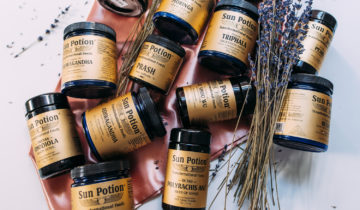Do you ever feel something is off during or after sex?
It is so important to listen not only to our intuition but also to our bodies. Sexual dysfunction is more common than we think – but unfortunately not widely discussed. As appointments with gynecologists are so limited, once we do manage to get an appointment the discussion usually centres on a symptomatic problem, and then we rarely discuss any discomfort, or any lack of libido we may experience. Welcome to the world of sexual dysfunction.
In the United States, approximately 40 percent of women have concerns related to sex, yet only 12 percent report distressing sexual issues. That is a lot of sexually unfulfilled women.
Given how society frames women’s sexuality it is no surprise at the lack of women who report these distressing issues and actively seek out help. Let’s unpack and make sure that we prioritize our sexuality, and our bodies for fulfilled and blissful sexual wellness.
What is sexual dysfunction? In clinical terms, sexual dysfunction is defined as a sexual problem that is persistent or recurrent and causes marked personal distress or interpersonal difficulty.
What does that actually mean though? Female sexual dysfunction takes on different forms, including lack of sexual desire, impaired arousal, inability to achieve orgasm, pain with sexual activity, or a combination of these issues. Treatment must be tailored to the sexual dysfunction diagnosis or diagnoses and to underlying physical, psychological, and relationship factors.
Let’s face it, women are multi-faceted and diagnosing and treating certain dysfunctions takes time and investigation – but rest assured solutions do exist and are readily available! Treatment must be tailored to the diagnosis (or in some cases diagnoses), as well as to underlying physical, psychological, and relationship factors.
The first step is the most obvious, and that is to talk about it! Do not suffer in silence. I cannot tell you how many patients who come to my practice and only after several visits do they then talk about this important issue. Given the multifactorial nature of sexual dysfunction it is important to evaluate the different etiologies that may be contributing to the problem. It is a complex condition, which often combines various patterns.
Let’s look at three of the most common problems I have seen in my practice:
Incontinence or prolapse.
Both urinary and fecal incontinence are associated with sexual dysfunction, why? Believe it or not one of the reasons can be caused simply by our fear of involuntary loss of urine or stool during sexual activity. It might sound odd, but actually our mind factors strongly into sexual dysfunction.
Vaginal dryness
It seems pretty obvious that a dry vagina doesn’t make sexual acts pleasing. Hormonal changes, such as pregnancy or breastfeeding, contraceptive pills/patches or IUD, and certainly also menopause later in life can affect our vaginal flora. But we shall not forget to most important: timing. If you are not physically ready, or mentally available, your body is not creating an adequate environment. And lubricants won’t be enough to override the discomfort.
Discomfort during sexual activity
The medical term for this indication is dyspareunia. It is often referred to as superficial (pain at the entry) or deep (bottom of vagina, towards the uterus). Multiple factors are implicated here: dryness, vaginismus (over activity of perineal muscles), infection or skin/mucosal disease, endometriosis and so on. As for atrophy, this is not an optimal receptive state for a woman to engage in sexual intercourse and can lead to many other problems like relationship issues, lack of self-esteem or psychological distress.
So you are probably asking yourself – what are the solutions?! Firstly it is important to highlight that the principal factors associated with a satisfying sex life are physical and psychological well-being and secondly the quality of the relationship with a sexual partner. Therefore, measures women take to improve their health and relationship will likely have a positive impact on their sex life. Lifestyle changes that reduce fatigue and stress can help women feel more supported and often result in positive effects on sexual function. It is important to note, and one thing that KG advocates is that overall wellness cannot be simplified to a one stop shop of fixes, which is precisely why I base my approach to sexual wellness in a holistic fashion.
However there are some things that are simply out of our control, even if we have taken the steps to take hold of our wellness, which is why treatment approaches need to be personalized to the patient and their needs. My practice recognizes this and the multifactorial nature of sexual dysfunction and therefore I have developed an approach which combines technology, therapy (both physical and psychological), and medication – all of which are based on specialized training and intensive research. Here are some of the solutions available and how they work to improve sexual dysfunction:
DIVA Laser therapy for incontinence, dryness and/or sexual discomfort: The vaginal laser therapy is a Health Canada approved technology which resurfaces the vaginal wall, replacing the damaged tissue with healthy, new tissue to improve vaginal health and reduce symptoms such as vaginal dryness.
Sexotherapy: the way you see yourself as a sexual being can affect your sex life. But by talking about it with a licensed professional and understanding the context will always help.
Pelvic floor physiotherapy: pelvic floor muscle dysfunction is a huge component that can either create pain if muscles are too tight, or lead to an unsatisfying sex life in case of laxity. Another great technology to acquire muscle strength in this area is a technology called Emsella, which can provide an entirely non-invasive electromagnetic stimulation of the pelvic floor musculature for the purpose of rehabilitation of weak pelvic muscles and restoration of neuromuscular control.
Hormone replacement therapy
Hormonal changes related to different periods in a women’s life can totally affect libido and sex life. Another treatment to increase sexual pleasure is an injection of PRP (platelet rich plasma) in pleasure areas like clitoris and G-spot, in order to enhance sensations locally.
Sexual dysfunction is entirely common, but left untreated can really affect the quality of life of patients but also their intimate partnership. It is through discussion and conversation that I hope we can demystify and tackle this and other issues related to female sexual wellness so that we can all enjoy our bodies and sexuality with confidence.
Signing off,
Dre Gab Landry

Read more from Dr Landy; Sexual Wellness
If you have any questions for Dre. Gabrielle Landry, feel free to leave them in the comments below, or can contact her clinic Elna Clinique.

Feature Image via Boutique Ousias





 No products in the cart.
No products in the cart.
I didn’t realize it was a comment for everyone to see.
I thought it was a comment directly.
I would rather my earlier post not be posted.